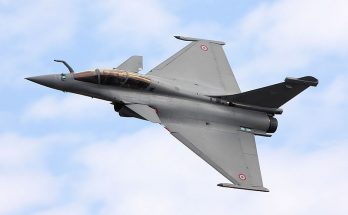A snapshot of recent news from sources around the world on the ongoing Russia-Ukraine war.

Political Developments
On Monday, U.S. President Donald Trump met in the Oval Office with his Ukrainian counterpart President Volodymyr Zelensky as well as the leaders of several NATO allies. The meeting followed Trump’s dialogue with Russian President Vladimir Putin in Alaska last week.
The European Union’s top diplomat, Kaja Kallas, has warned against a peace deal that would require Ukraine to cede territory to Russia, calling it a “trap” laid by Putin. Kallas also emphasized the need for “credible and robust” security guarantees for Ukraine, stating that the strongest guarantee is a strong Ukrainian army.
Russia, meanwhile, has continued to insist that Ukraine must give up the entire Donbas region as a condition for peace. Moscow also continues to demand that Kyiv be denied admittance to NATO.
And while the U.S. has pushed for a direct meeting between Putin and Zelensky, the Kremlin continues to rule out such a step. “Putin will be ready to meet with Zelensky, if the agenda for the summit is prepared. This agenda is not ready at all,” Russian Foreign Minister Sergei Lavrov said on Friday.
Military Assistance to Ukraine
The Financial Times reported on August 18 that Kyiv is pledging to purchase up to $100 billion in American arms as part of a push to obtain American security guarantees. The Ukrainian proposal would also include a $50 billion joint effort to mass produce drones. According to a document seen by the FT, Ukraine would seek European help to finance the arms acquisitions.
The Netherlands is sending 300 troops and Patriot air defense systems to Poland to help protect NATO territory and deter Russian aggression. The decision follows the crash of a Russian drone on Polish territory earlier in the week.
Ukraine has started series production of a new cruise missile with a range of 3,000 kilometers. The Flamingo is a domestically developed cruise missile with a payload capacity of 1,000 kilograms.
Battlefield Updates
Russia launched a major drone and missile attack on western Ukraine on Thursday, targeting an American-owned electronics plant and other military-industrial sites. This rare strike in a previously less-targeted region occurred while the US is leading peace talks to end the conflict, a move opposed by Moscow.
Throughout the week, the Russia performed a number of ballistic missile strikes on Ukraine. Moscow fired two Iskander-M ballistic missiles at Ukraine on the night of August 15, followed by one apiece on August 16 and August 17. On 18 August, four ballistic missiles targeted Ukrainian cities. More Iskander-Ms were fired at Ukraine on August 20, with Kyiv stating that its air-defenses downed several one of the incoming missiles. Overnight on August 21, Russia utilized Kalibr and Kinzhal missiles to strike Ukraine.
Amid the Russian air blitz, a Russian drone crashed in a farm in eastern Poland, damaging several nearby buildings but resulting in no casualties. The incident follows similar Russian drone incursions in other NATO countries, such as Lithuania, which earlier in August requested NATO deploy more counter-UAS technology to address the airspace violations.
Ukraine performed a long-range drone strike on August 15 targeting a supply ship in the Caspian Sea that was suspected of carrying drone components to Russia. Ukraine has also targeted Russian oil pipelines, hitting parts of the Druzhba pipeline that supplies Hungary and Slovakia.
Russian military recruitment slowed down in the second quarter of 2025. According to Russian government data cited in opposition outlets, almost 38,000 people received sign-on bonuses from the Ministry of Defense in this period, compared to nearly 93,000 in the same period last year. The report adds that, so far in 2025, around 127,500 people signed on to the military, about 40,000 less than in the first half of 2024.
A Ukrainian official has emphasized the increasingly vital role of unmanned ground vehicles (UGVs) in the ongoing conflict with Russia, stating they are “really crucial” for missions ranging from electronic warfare and medical evacuation to mine clearance and intelligence gathering. Maj. Gen. Borys Kremenskyi also extended an invitation to the defense industry to provide any available UGV systems for testing in real-world combat conditions. The domestically developed Droid TW is one such UGV that has already been deployed for ISR missions.
For 50 years, Forecast International intelligence reports have been the aerospace and defense industry standard for accurate research, analysis, and projections. Our experienced analysts compile, evaluate, and present accurate data for decision makers. FI's market research reports offer concise analysis of individual programs and identify market opportunities. Each report includes a program overview, detailed statistics, recent developments and a competitive analysis, culminating in production forecasts spanning 10 or 15 years. Let our market intelligence reports be a key part of reducing uncertainties and mastering your specific market and its growth potential. Find out more at www.forecastinternational.com



